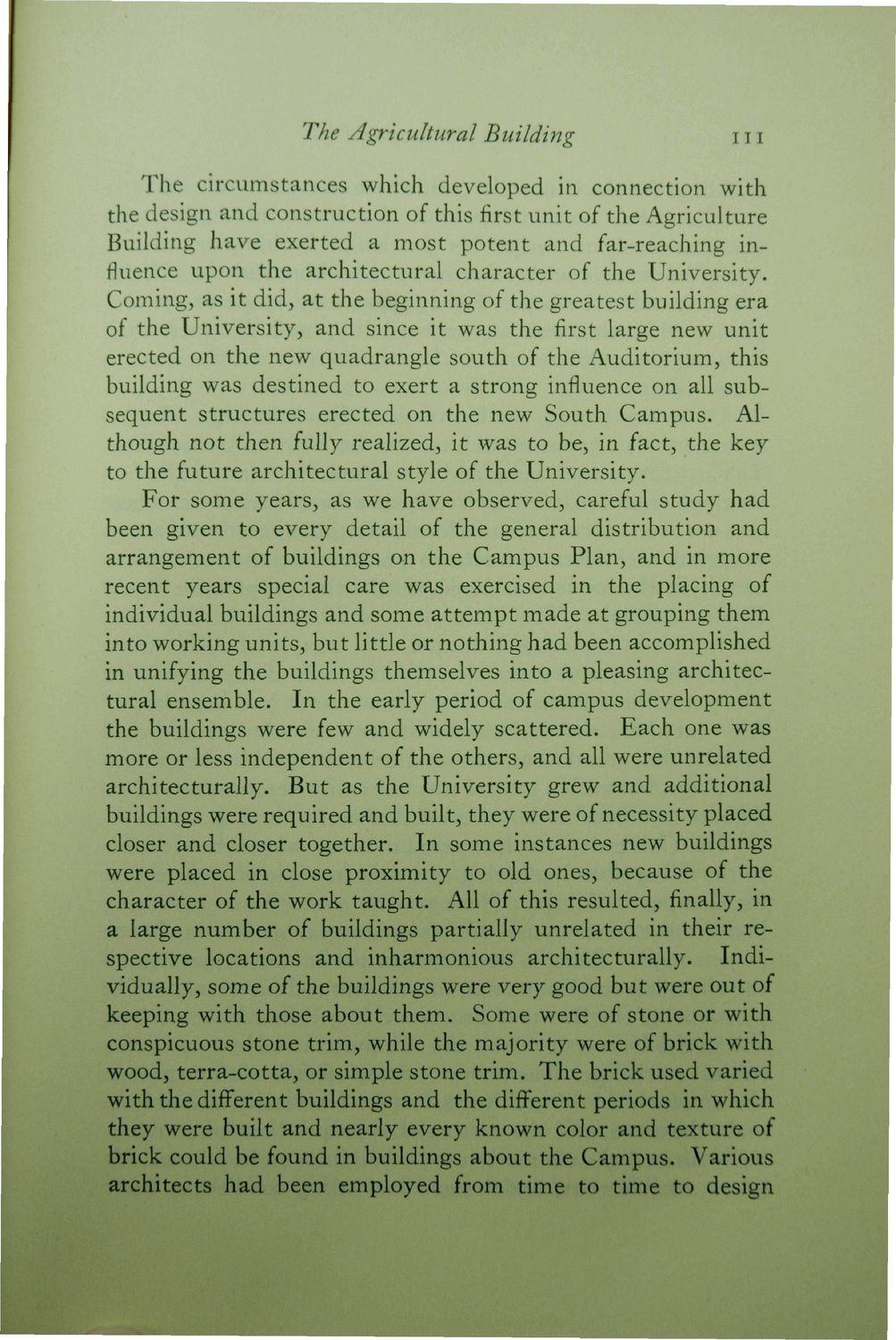| |
| |
Caption: Book - 30 Year Master Plan (Tilton & O'Donnell)
This is a reduced-resolution page image for fast online browsing.

EXTRACTED TEXT FROM PAGE:
The Agricultural Building 111 The circumstances which developed in connection with the design and construction of this first unit of the Agriculture Building have exerted a most potent and far-reaching influence upon the architectural character of the University. Coming, as it did, at the beginning of the greatest building era of the University, and since it was the first large new unit erected on the new quadrangle south of the Auditorium, this building was destined to exert a strong influence on all subsequent structures erected on the new South Campus- Although not then fully realized, it was to be, in fact, the key to the future architectural style of the University. For some years, as we have observed, careful study had been given to every detail of the general distribution and arrangement of buildings an the Campus Plan, and in more recent years special care was exercised in the placing of individual buildings and some attempt made at grouping them into working units, but little or nothing had been accomplished in unifying the buildings themselves into a pleasing architectural ensemble. In the early period of campus development the buildings were few and widely scattered. Each one was more or less independent of the others, and all were unrelated architecturally. But as the University grew and additional buildings were required and built, they were of necessity placed closer and closer together. In some instances new buildings were placed in close proximity to old ones, because of the character of the work taught. All of this resulted, finally, in a large number of buildings partially unrelated in their respective locations and inharmonious architecturally. Individually, some of the buildings were very good but were out of keeping with those about them. Some were of stone or with conspicuous stone trim, while the majority were of brick with wood, terra-cotta, or simple stone trim. The brick used varied with the different buildings and the different periods in which they were built and nearly every known color and texture of brick could be found in buildings about the Campus. Various architects had been employed from time to time to design
| |